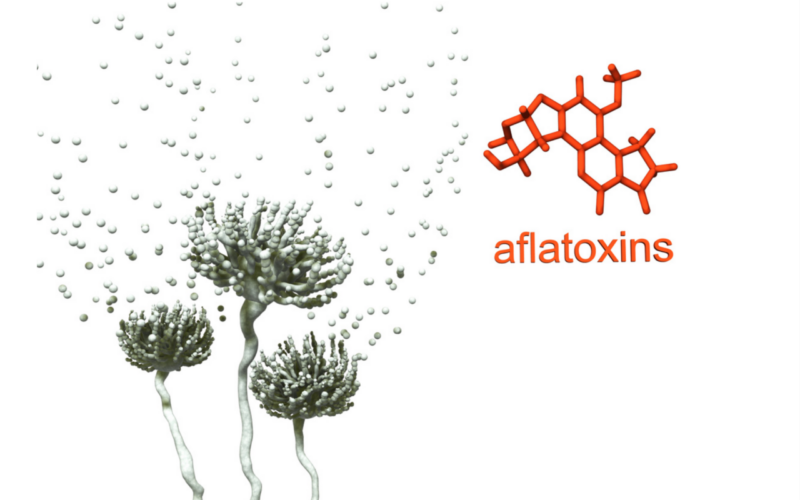Finding and Avoiding Mold and Mycotoxins

Mycotoxins are dangerously toxic substances released from mold spores on food, air, the environment, homes, and buildings. Exposure to mycotoxins can happen through the skin, lungs, and digestive system and may lead to respiratory problems, skin irritation, gastrointestinal problems, inflammation, compromised immunity, liver and kidney damage, and neurological issues.
- The most well-known health problems associated with mycotoxins are respiratory issues like asthma, coughing, wheezing, and shortness of breath.
- When mycotoxins come into contact with the skin, they can cause rashes and severe itching, which can be particularly problematic for people with pre-existing skin conditions.
- Other less apparent issues with mycotoxin exposure are more difficult to diagnose and treat, such as organ damage, immunological disorders, and cognitive issues. Read more on treatment for chronic mold exposure Food and Environmental Sources of Mycotoxins
Certain foods are prone to mold and must be carefully grown, stored, and processed to reduce the risk of developing dangerous mycotoxins
Food Sources of Mycotoxins
- Aspergillus mold produces Aflatoxins on contaminated beans, wheat, corn, rice, and tree nuts, as well as meat, eggs, and meat due to animals consuming infected feed. Peanuts and peanut butter are one of the most well-known sources of aflatoxins.
- Fumanosins commonly infect corn, but under the right weather conditions will also infect wheat.
- Patulin is produced by Penicillium, Aspergillus, and Byssochylamys molds that grow on fruit, grains, and cheese. The best-known example is moldy, bruised, or rotten apples used to make apple juice or cider.
- Ochratoxin A, produced by Aspergillus and Penicillium molds, is found in contaminated wheat, rye, oat, barley, coffee, grapes, and wine.
Environmental Sources of Mycotoxins
Preventing mold growth is the most critical step toward reducing the risk of exposure to toxins. First, ensure your home is well-ventilated to prevent moisture from building up and create an environment where mold can thrive. Additionally, you should regularly clean your house, paying attention to areas where mold is likely to grow, such as bathrooms and kitchens. Another effective way to prevent mold is to control the humidity levels in your home. You can use a dehumidifier or an air conditioner, especially during humid months. It is also essential to fix any leaks or water damage as soon as possible, as these can create an ideal environment for mold growth. Finally, it is vital to be proactive in preventing mold. Regularly inspect your home for tell-tale signs, such as a musty smell or visible growth. If you do find mold, it is essential to address it immediately. This may involve hiring a professional mold remediation service to remove the mold and prevent it from returning.
Hidden Sources of Mold in the Home
When mold forms in damp, wet, and dusty environments on organic surfaces like walls, upholstery, carpets, and wood, some species of mycotoxins can form that are problematic to health. However, if dirt and dust are present, mold spores can form even on inorganic surfaces like metal and glass. The most dangerous mycotoxins on environmental surfaces are Stachybotrys chartarum and Chaetomium globosum, which form highly toxic metabolites connected to significant adverse health effects. Hidden sources of mold include water leaks and standing water in the following:
- Above ceiling tiles
- Basements and attics
- Crawl spaces
- Fabrics and upholstery
- Inside heating, ventilation, and air ducts
- On and inside walls
- Painted surfaces
- Tile, cement, and grout
- Under carpets and floorboards
Because mold and mycotoxins are so dangerous to health, it is crucial to identify hidden sources of mold that could lead to the development of these toxic metabolites. Refrain from taking shortcuts and painting over suspected moldy areas. Dangerous mold spores can form before anything is visible, so pay close attention to damp surfaces and water leaks. If you live in the Los Angeles area and believe you have a chronic health issue related to mold exposure, contact our call us at (949) 535-2322 clinic for more information.

